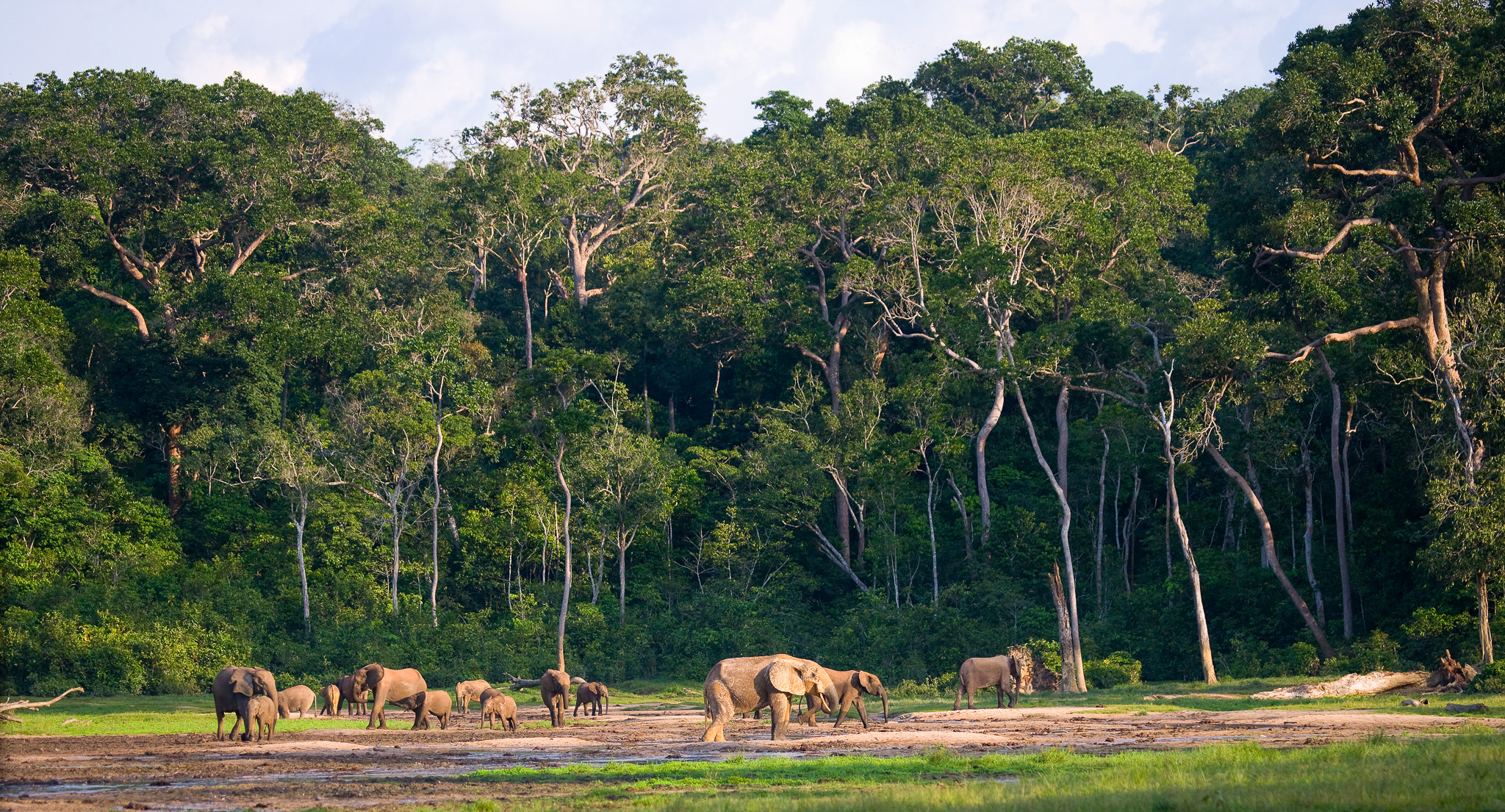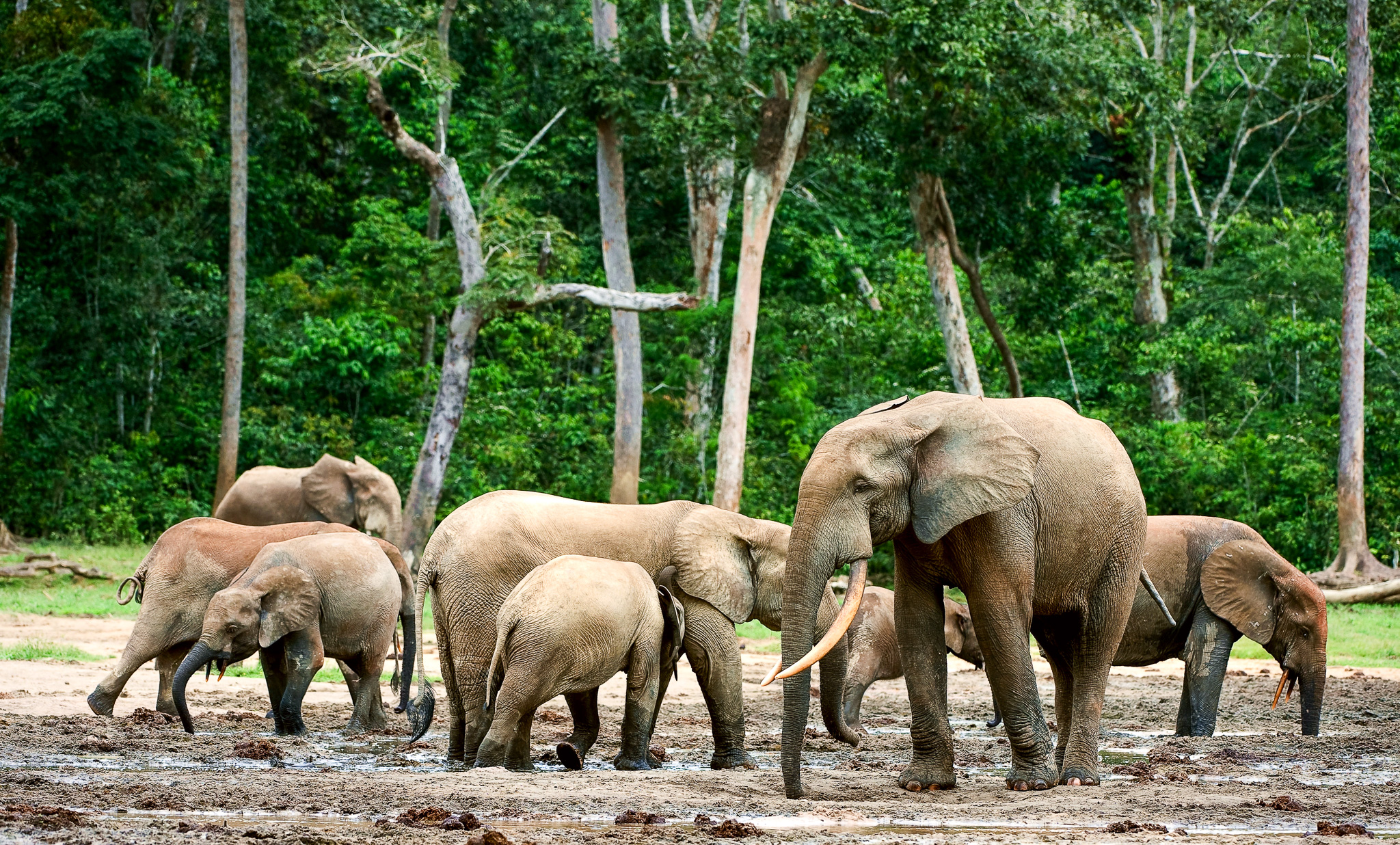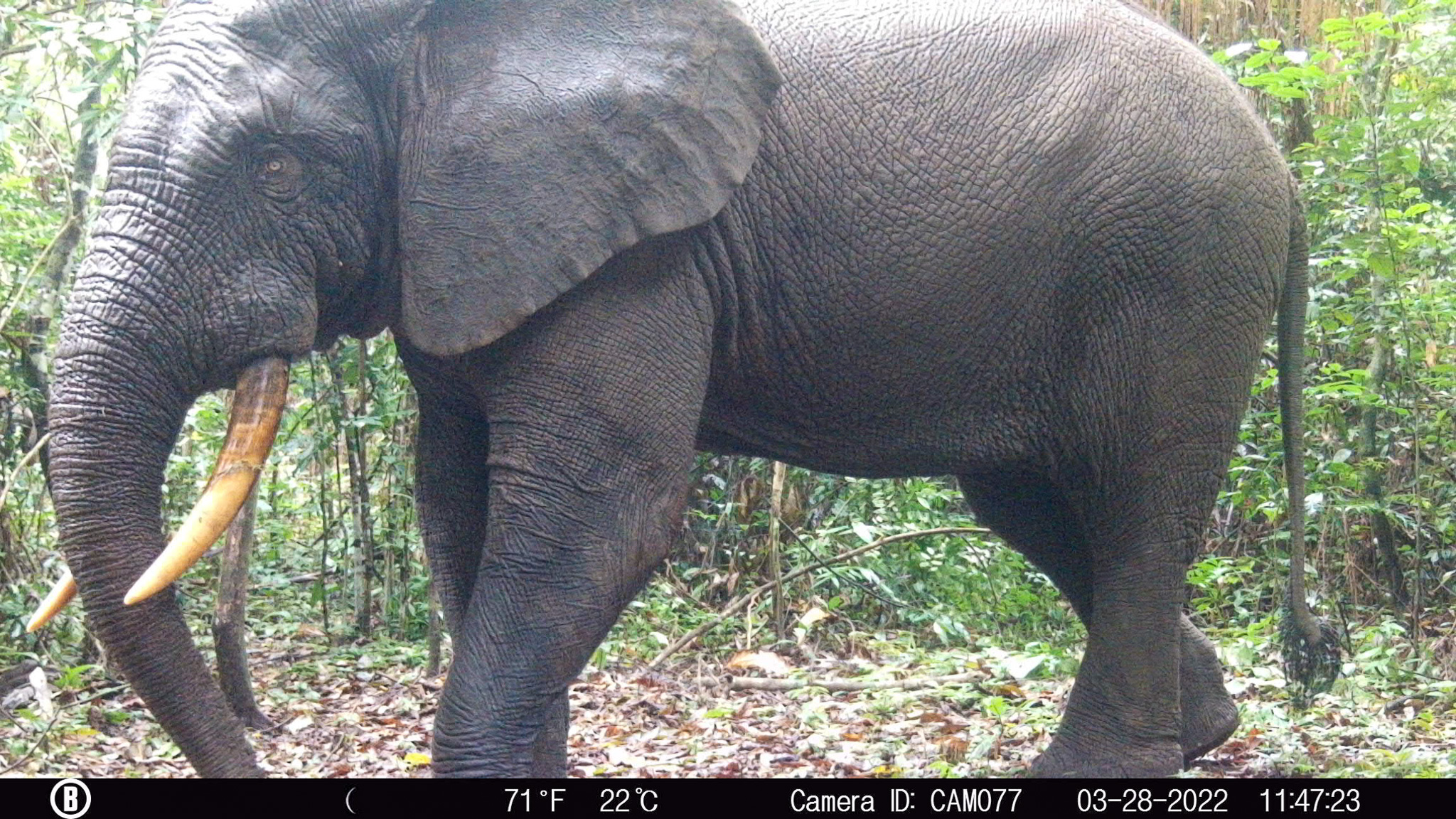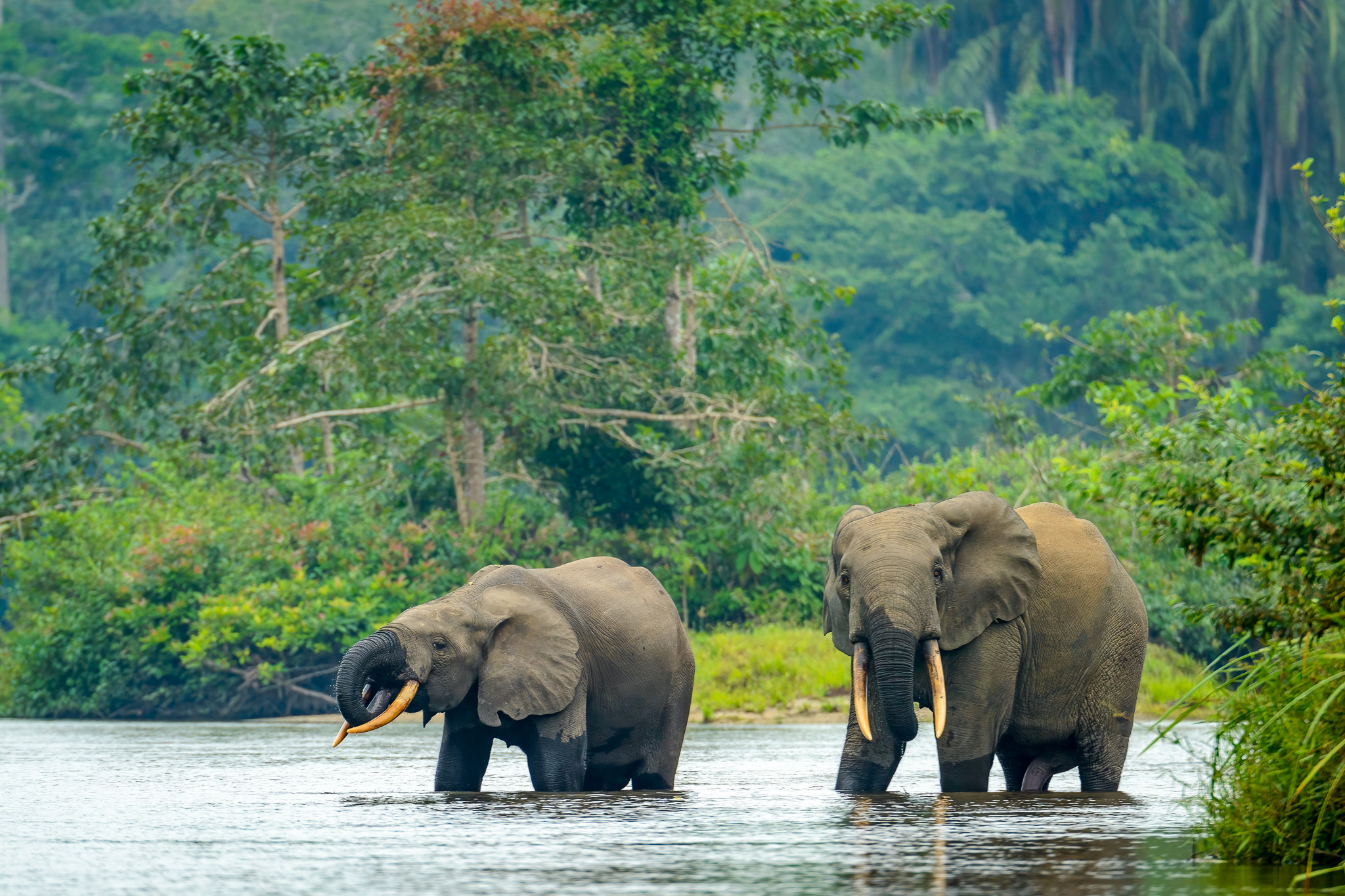Forest Elephants: Guardians of Biodiversity and Climate in Central Africa

Group of African forest elephants in the forest edge in Central African Republic
Deep in the ancient rainforests of Central Africa, a silent architect is at work. With every step, the African forest elephant shapes the landscape, opening paths for wildlife, regenerating forests, and storing carbon — making them one of the most important species for biodiversity and climate action on the continent.
Smaller than their savanna cousins, with rounded ears and straighter tusks, forest elephants are specially adapted to move through dense undergrowth. As they travel, they create wildlife corridors used by species like chimpanzees, pangolins, and mandrills. Their dung is rich in seeds, making them the ultimate forest farmers — dispersing and fertilizing the trees that form the forest canopy.
“Each step they take influences species distribution, nutrient cycling, and forest structure,” says Dr. Philip Muruthi, AWF’s Species Protection Specialist. “Remove elephants, and the rainforest’s resilience starts to unravel.”
Climate Resilience Begins with Elephants
African forest elephants play a powerful role in the fight against climate change. By clearing undergrowth and helping trees regenerate, they support carbon sequestration, making rainforests more efficient at absorbing carbon dioxide.
In places like Dipikar Island in Cameroon’s Campo Ma’an National Park, elephants regularly return to mineral-rich soil, boosting biodiversity and creating essential zones for wildlife. These high-use areas are a conservation priority — where the presence of elephants signals a thriving, functioning ecosystem.
But forest elephants are under siege.
A Species on the Brink

African Forest Elephants at the edge of the forest
Relentless poaching and habitat destruction have pushed forest elephants to the brink of extinction. Once widespread, they are now confined to just a quarter of their historic range. The IUCN Red List classifies them as Critically Endangered — their population having declined by more than 60% in the last decade alone due to the ivory trade.
“When we lose elephants, we don’t just lose a species — we lose the forest’s memory, its resilience, and its ability to heal,” warns Dr. Muruthi.
Without elephants, seed dispersal declines, forest regeneration slows, and biodiversity suffers. The ripple effects extend far beyond wildlife — to climate systems, clean water sources, and the livelihoods of millions who depend on healthy forests.
Community-Led Conservation: A New Model for Protection
At the African Wildlife Foundation, we believe in a conservation model that is inclusive, innovative, and rooted in community leadership. In Campo Ma’an, AWF has partnered with Cameroon’s Ministry of Forestry and Wildlife (MINFOF) to combine cutting-edge technology with indigenous knowledge to protect forest elephants and the ecosystems they support thanks to funding from Fondation pour l’Environnement et le Développement au Cameroun (FEDEC), KFW and Karen Combs.
Across the park, camera traps and acoustic sensors collect data on elephant movements and other rare species, including chimpanzees, mandrills, and even the elusive panther. These tools provide scientists with real-time insights into wildlife behavior and habitat use.

Camera Trap image of a Forest Elephant in Cameroon's Campo Maan Landscape
But technology is only part of the solution.
Indigenous communities like the Baka and Bagyeli, who have lived in harmony with the forest for generations, are central to our conservation success. As ecoguards and researchers, they offer invaluable knowledge about animal patterns, forest trails, and seasonal shifts.
“The community’s role has been transformative,” says Norbert Sonne, AWF’s Country Director in Cameroon. “By merging traditional wisdom with science, we’ve created a conservation model that’s scalable, ethical, and effective.”
Through training programs, local partners are building skills in ecological monitoring, data analysis, and public education. These investments ensure that communities lead the protection of their natural heritage, not just participate in it.
Saving Elephants is Saving the Planet
Forest elephants are not just icons of Africa’s wild heart — they are climate heroes, biodiversity engineers, and symbols of cultural strength for communities across the Congo Basin. Their survival is essential for the resilience of forests, the stability of ecosystems, and the well-being of future generations.
AWF’s work in Central Africa proves that conservation is most powerful when it is community-led, science-driven, and focused on the species that hold ecosystems together.
“Protecting forest elephants is one of the most effective climate actions we can take,” Dr. Muruthi emphasizes. “Their survival ensures the survival of the forests that sustain us all.”

African forest elephants on the Lekoli River in the Republic of the Congo
Read more about how AWF is Applying Conservation Science towards African Species protection